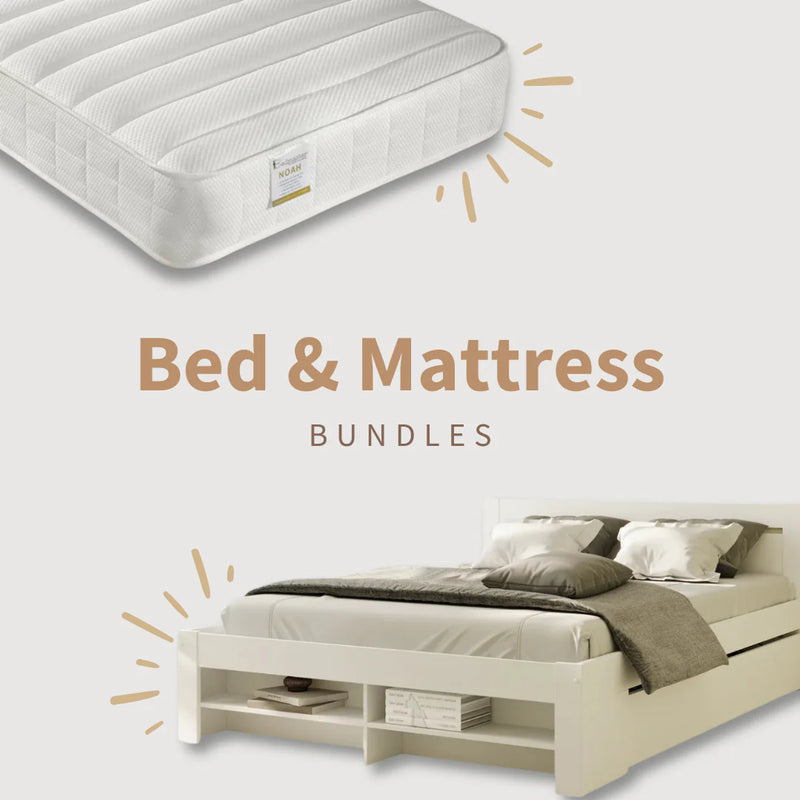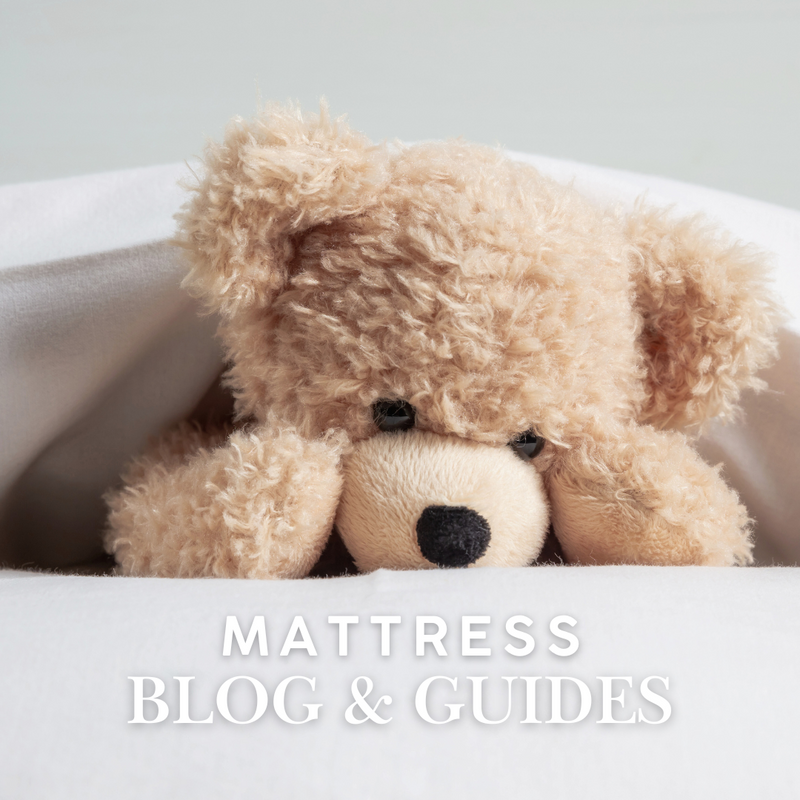Mattresses play an essential role in providing us with a good night’s rest, yet many of us forget how important it is to replace them regularly. Over time, even the best mattresses degrade, losing their support and comfort, which can significantly impact your sleep quality and overall well-being. So, how often should you change your mattress, and what signs should you look out for to know it's time for a replacement? In this guide, we’ll walk you through everything you need to know to ensure your mattress stays supportive, comfortable, and hygienic.
1. The Ideal Frequency to Change Your Mattress
The general recommendation for mattress replacement is every 7 to 10 years, but this can vary depending on the type of mattress, its quality, and how well it has been maintained. Here are some basic guidelines for different mattress types:
-
Memory Foam Mattresses: These typically last between 7 and 10 years. Memory foam tends to soften over time and can lose its ability to return to its original shape, leading to sagging and decreased support.
-
Latex Mattresses: Latex mattresses are more durable and can last anywhere from 10 to 15 years. They are naturally resilient and less prone to sagging than other mattress types.
-
Innerspring Mattresses: These tend to wear out faster, with an average lifespan of 6 to 8 years. The coils in innerspring mattresses may lose their tension over time, reducing support.
-
Hybrid Mattresses: Hybrid mattresses, which combine foam and innerspring layers, generally last between 6 and 8 years, depending on the quality of the materials used.
While these timeframes offer general guidelines, several factors can influence how long a mattress lasts, including its usage, your weight, and the level of care it receives.
2. Signs Your Mattress Needs Replacing
Even if your mattress falls within the expected lifespan, you should always be on the lookout for certain signs that indicate it's time for a replacement. Here are the key indicators that your mattress may be nearing the end of its useful life:
1. Visible Sagging
One of the most obvious signs that your mattress needs replacing is sagging. Over time, the materials in a mattress—whether memory foam, latex, or innerspring—will begin to break down, causing dips and sagging in the areas where you sleep most. If you notice your mattress has indentations or low spots, especially in the middle, it’s time to start shopping for a new one.
2. Waking Up with Aches and Pains
A good mattress should support your body and keep your spine in proper alignment during sleep. If you find yourself waking up with aches, pains, or stiffness—especially in your back, shoulders, or hips—your mattress may no longer be providing the support you need. This is a strong sign that your mattress has lost its structural integrity.
3. Increased Allergies or Asthma Symptoms
Over time, mattresses accumulate dust mites, dead skin cells, and allergens, even with regular cleaning. If you or your family members are experiencing worsened allergy or asthma symptoms, your mattress could be part of the problem. If deep cleaning doesn’t help, it’s a sign that the mattress is too old to maintain proper hygiene.
4. Noisy Coils
If you have an innerspring or hybrid mattress, the coils may start to squeak or make noise as they lose tension and wear down. This is a sign that the mattress is no longer providing even support and should be replaced.
5. Lumpy or Uneven Surface
Over time, the materials inside a mattress can shift, creating lumps or uneven spots on the surface. If your mattress feels bumpy or uneven when you lie down, it’s time for a replacement, as this unevenness can prevent proper spinal alignment during sleep.
6. Poor Sleep Quality
If you’ve noticed a decline in your sleep quality, and nothing else has changed in your sleep environment, your mattress may be the issue. Tossing and turning during the night, waking up frequently, or feeling unrested in the morning could all be signs that your mattress is no longer supporting you as it should.
3. Impact of Mattress Type on Replacement Timing
The type of mattress you own plays a significant role in how often it needs replacing. Let’s take a closer look at the different mattress types and how they affect replacement timing:
1. Memory Foam Mattresses
Memory foam mattresses tend to soften with age, and while they conform well to your body, they can lose their ability to bounce back over time. Signs that it’s time to replace your memory foam mattress include significant sagging or the formation of body impressions that don’t disappear after a few minutes.
2. Innerspring Mattresses
Innerspring mattresses rely on metal coils for support, and these coils can wear out, leading to a loss of firmness and support. You may notice that the mattress feels less supportive or that you can feel the springs poking through. Innerspring mattresses generally need to be replaced more frequently than memory foam or latex.
3. Latex Mattresses
Latex is one of the most durable materials used in mattresses and can last up to 15 years or more. However, even latex will eventually break down. Signs that it’s time to replace a latex mattress include loss of firmness, cracks in the material, or increased discomfort during sleep.
4. Hybrid Mattresses
Hybrid mattresses, which combine innerspring coils and memory foam or latex layers, typically need replacing every 6 to 8 years. The springs may wear out more quickly than the foam, leading to sagging or uneven support.
4. Health and Comfort: Why Regular Changes Matter
Regularly changing your mattress isn’t just about maintaining comfort—it’s also about protecting your health. Here’s why it’s crucial to replace your mattress on a regular schedule:
1. Spinal Health and Alignment
A worn-out mattress that no longer supports your body can cause your spine to fall out of alignment while you sleep. This can lead to back pain, neck pain, and even chronic issues if left untreated. A mattress that provides proper support ensures your spine stays in a neutral position, reducing the risk of discomfort and injury.
2. Sleep Quality
Your mattress plays a crucial role in determining the quality of your sleep. A mattress that’s no longer supportive or comfortable can lead to frequent tossing and turning, preventing you from entering the deep stages of sleep needed for full body restoration. Replacing your mattress ensures you get the best possible rest.
3. Allergy and Asthma Management
Old mattresses can be a breeding ground for dust mites, bacteria, and allergens. Regular cleaning can help reduce these issues, but after several years, mattresses become difficult to clean effectively. Replacing your mattress every 7 to 10 years helps maintain a healthy sleep environment and reduces the risk of allergies and asthma symptoms.
5. Cost Considerations in Mattress Replacement
Replacing a mattress can be a significant investment, but it’s one that pays off in terms of better sleep, improved health, and overall comfort. While the cost of a new mattress can vary widely depending on the type, size, and brand, here are some factors to consider when budgeting for a mattress replacement:
-
Average Costs by Mattress Type:
- Memory Foam: £200-£1,000
- Innerspring: £200-£900
- Latex: £800-£1,500
- Hybrid: £500-£1,200
-
Warranty and Trial Periods: Many mattress companies offer warranties and trial periods, allowing you to test the mattress for a period before making a full commitment. These can help justify the cost by ensuring you’re making the right purchase.
-
Long-Term Savings: While replacing a mattress might feel like a significant expense, consider the long-term benefits of better sleep and fewer health issues. A high-quality mattress can improve your quality of life, reduce healthcare costs related to sleep disorders, and prevent the need for frequent mattress replacements.
6. Expert Tips for Extending Mattress Lifespan
While it’s essential to replace your mattress regularly, there are steps you can take to extend its lifespan. By following these expert tips, you can keep your mattress in top condition for as long as possible:
-
Use a Mattress Protector: A waterproof mattress protector shields your mattress from spills, sweat, dust mites, and allergens. This simple addition can prevent damage and help maintain your mattress's hygiene.
-
Rotate and Flip (If Applicable): Rotate your mattress every 3 to 6 months to distribute wear evenly across the surface. Some mattresses are also flippable, so you can flip them periodically to prevent sagging.
-
Avoid Sitting on the Edge: Sitting on the edges of your mattress can cause the materials to compress and wear down more quickly. Try to avoid this habit to maintain the mattress's structure.
-
Clean Regularly: Vacuum your mattress every few months to remove dust, dirt, and allergens. Spot-clean stains as they occur, and allow your mattress to air out regularly by leaving it uncovered for a few hours.
7. How to Choose the Right Mattress for Longevity
When it’s time to replace your mattress, choosing the right one is key to ensuring it lasts as long as possible. Here are some factors to consider when selecting a mattress for longevity:
- Material Quality: Higher-quality materials typically last longer. For example, natural latex is more durable than synthetic foam, and high-density memory foam holds up better over time than low-density foam.
- Density and Thickness: When choosing a foam mattress, opt for one with a higher density. High-density foams last longer because they are more resistant to wear and tear. Additionally, thicker mattresses tend to provide more durable support over time. For innerspring and hybrid mattresses, ensure that the coils are made from high-gauge steel, as these will maintain their tension longer.














